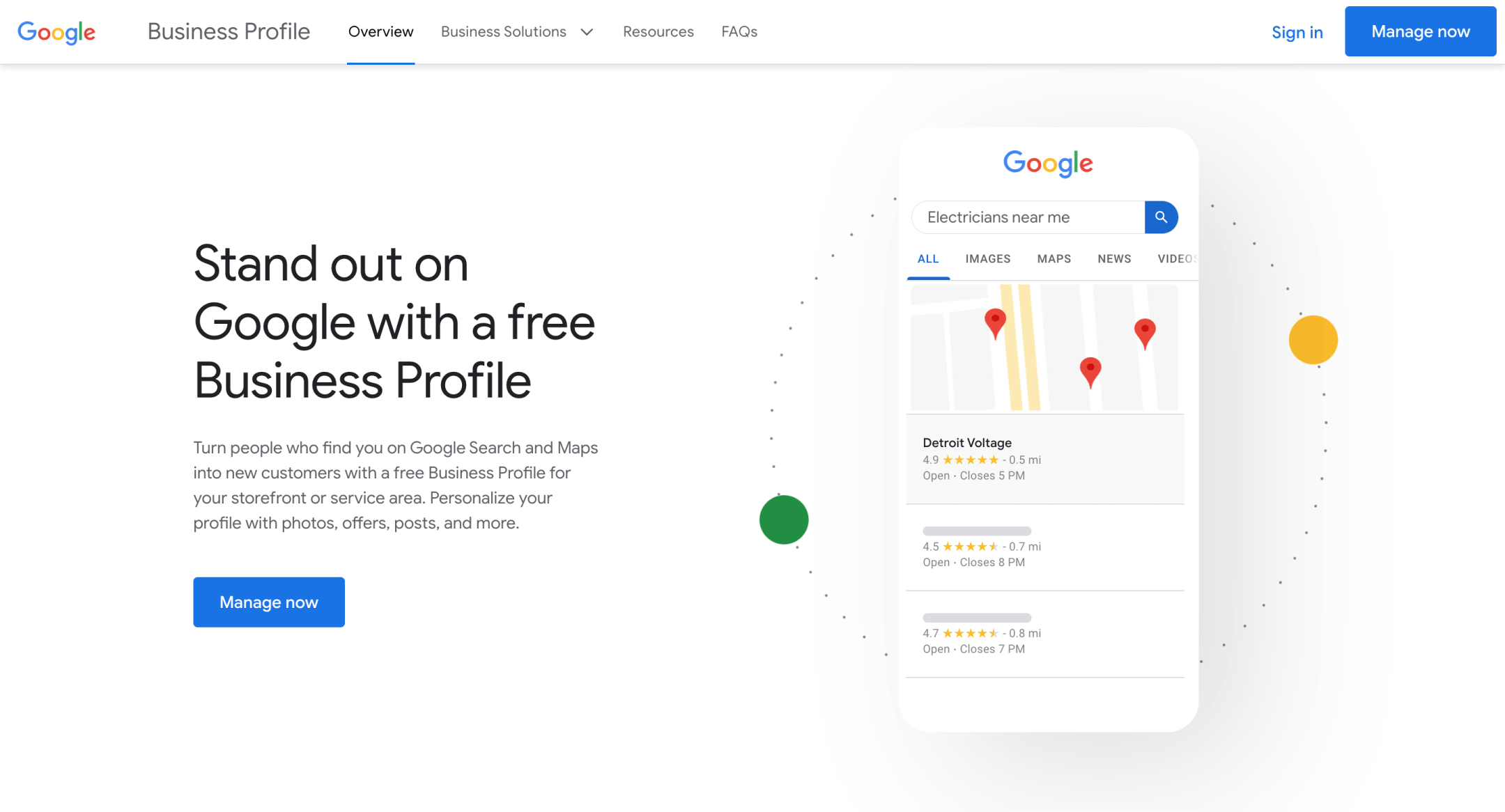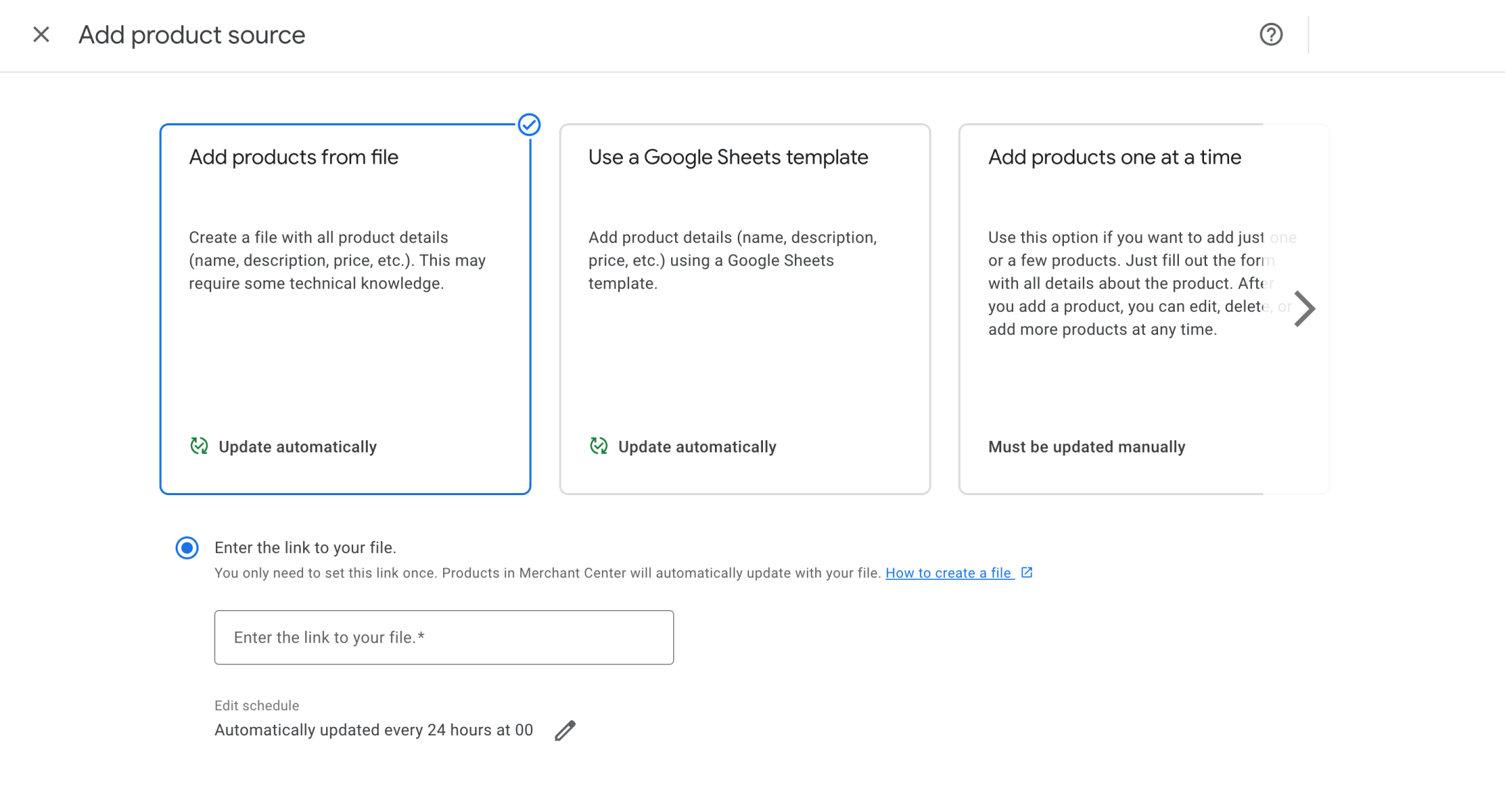Though online shopping is on the rise, there's still a group that enjoys shopping in a real world with the ability to speak to real people, and visiting the place in person. This indicates that some of potential customers for an offline retail point might be very close, maybe even around the corner. However, people might be unaware of the simple fact their desired physical store exists nearby. This facet can be partly explained by the surge in time spent online glancing on the bright screens of smartphones and tablets. An absent online presence could mean losing out on many customers.
Google, who is a modern leader in connecting shoppers to retailers, has a tool to aid physical stores in increasing their sales by adding a new dimension for their discoverability. Additionally, to their offline ads, physical stores may present their goods in the virtual space of the World Wide Web. The Local Inventory Feed is a simple file crafted with a consideration of specification-determined format that acts like a medium for successful upload by search engine. Showcasing in-store merchandise to local users becomes a breeze.

This functionality enables an effortless comprehensive inventory list compilation process that not only offers insights into inventory levels and pricing at their on-street stores. It also allows for seamless management of product availability and pricing updates across online platforms. By utilizing this feature, retailers can maintain catalog information consistency is essential for ensuring a smooth experience for clientele across online and offline channels. This consistency helps customers make informed decisions, and this consistency also builds trust in the brand. Anyone new to the concept of product feeds and those who want to understand more about their formats and generation methods, feel free to explore this informative article.
By integrating local feeds, stores not only enhance their online presence but also promote community involvement and boost the local economy, thereby attracting more regional consumers and increasing sales. This strategy through active engagement within the local community, not only increases revenue. Businesses can establish a robust support system, laying the groundwork for customer loyalty and enhance word-of-mouth referrals.
Moreover, businesses can lean on sophisticated data processing platforms like Google Analytics to dissect the intricacies of their local inventory advertising efforts. By delving into comprehensive data understanding, incorporating predictive trends showcasing, they fine-tune their targeting methods with precision. Additionally, integrating a Store Visits feature offered by the Google's event crunching tool, an ability emerges. Merchants become capable of tracking physical store visits resulting from online engagements. This inevitably seamlessly merges the digital and physical realms, maximizing ROI and overall effectiveness.
How physical store benefits from publishing products online via local shopping feed
Physical stores serve as more than just retail outlets; they serve as vital community hubs where people can directly interact with the brand. Despite the widespread adoption of online shopping, brick-and-mortar establishments remain essential in the retail landscape. By leveraging product feeds to showcase their inventory on online platforms, these retail points can significantly enhance their visibility and sales potential.
Adopting digital marketing tactics can be beneficial for the brick-and-mortar stores in these major ways:
- Expanding brand's fan base.
Present online products offered on offline shelves broads the potential buyer base both in the local region and beyond. This expanded reach allows capturing the interest of online shoppers actively seeking specific products nearby. - Seamless shopping options.
Seamlessly blending online and offline options offers flexibility in the shopping journey. They can browse products online and decide whether to make their purchase in-store or online. Features like online ordering with in-store pickup or the ability to return online purchases at physical locations add convenience, fostering customer loyalty. These services cater to a variety of customer preferences, enhancing the overall shopping experience. - Brand building and engagement.
An online presence lets physical stores reinforce their brand by sharing their unique story and values. Using digital ads, social media, and engaging content like blogs and videos helps increase brand awareness. These strategies keep the brand in customers' minds and foster engagement. - Increased local discoverability.
Imagine this: when businesses showcase their products online, it's like planting a flag in the digital world. This helps potential customers find the store more easily when they're looking for similar products nearby. This not only helps physical stores attract new customers who stumble upon their products online but also gives a visibility boost to online-only brands. - Insightful marketing and personalization.
Through online interactions, stores gain insights into customer preferences and behaviors, allowing for personalized marketing efforts. By analyzing this data, stores can better manage their inventory and tailor the shopping experience to meet customer needs, resulting in increased satisfaction and potentially higher customer retention. - Increasing sales and conversions.
A well-organized shopping feed with informative product details can lead to higher conversion rates. Features like user reviews, price comparisons, act similarly to a beacon of clarity, illuminating the path to informed decisions. It's akin to equipping customers with a compass in their shopping adventure. Armed with knowledge, customers confidently navigate through the retail terrain, resulting in fruitful transactions across both digital and physical storefronts. - Adjusting to consumer shifts.
While online shopping grew during the pandemic, physical stores remain relevant. Integrating both online and offline strategies helps stores adapt to evolving consumer preferences. By embracing technology while preserving their unique strengths like exceptional service and immersive experiences, physical stores can remain resilient and meet customer expectations.
What is Google Local Inventory Feed?
To facilitate the integration of online and offline retail operations, Google provides a tool called the Local Inventory Feed. This tool enables retailers to sync their offline inventory points, ensuring coherence between the digital and physical retail worlds. Additionally, it allows retailers to display real-time product availability to online shoppers, enhancing the overall shopping experience for those who are searching for similar items nearby on Google. Essentially, it serves as a bridge connecting a retailer's physical inventory with their online presence.
Through their digital footprint, retailers make it more convenient for local people to locate and acquire the goods they are looking for. Moreover, by utilizing this tool, retailers can enhance their presence in the local market simultaneously drawing increased amount of foot traffic to their physical locations, thereby having a positive outcome for their goals.
How does Google Local Inventory Feed work?
Decoding Google's Local Inventory Feed mechanism is rather straightforward, and it includes a number of steps to launch the online discoverability increase. Ready to begin? Here's a starting point with explanation of these steps a merchant should execute to make local product feed work.
The initial stage entails crafting a data feed for the catalog offered for sale by the local store. Store personnel assemble a thorough data feed containing intricate details about the items stocked in-store. This feed encompasses not only fundamental product information but also specifications mandated by the Google Shopping marketplace. While some attributes like the Stock Keeping Unit (SKU) number are compulsory, however, the system also accepts data deemed optional, such as available pickup methods. These optional attributes have an immence value in offering potential purchasers deeper insights into both the item offering and the enterprise that makes this offering. In a complex the final outcome is clear: providing clientele with detailed product information enhances their ability to make well-informed buying choices, leading to increased satisfaction with their purchases in the long run.
When it comes to retailers creating the data feed, they have two primary options: manual creation using a spreadsheet editor or utilizing specialized feed generators. Once the feed is generated, the next step is to submit it to Google. This submission process can be executed manually by uploading the feed file directly to the Google server or by configuring Google to retrieve the file automatically from the store's server. The decision between these methods is influenced by the retailer's preferences and technological capabilities.
As the feed file finds its way into Google's digital realm, the tech titan dons its investigative hat, delving into the depths of the data like a seasoned detective. Each listed product becomes a clue in the search for relevance, aligning with the quest of online users' inquiries. Should a user's search mirror the essence of a product stocked within the retailer's inventory, Google may unveil it within the search results, guiding seekers to its presence in nearby territories. Furthermore, Google wields the power of the feed data, crafting enchanting advertisements that dance across its domains, from the bustling streets of Google Maps to the bustling marketplace of Google Shopping.
Within the realm of Google's search results, users embark on epic odysseys in search of the perfect products, guided by the beacon of local inventory enlightenment. Imagine a traveler in search of "running shoes near me," and behold, Google unveils a tapestry of nearby stores adorned with these sought-after shoes. With a mere tap, users are whisked away to a Google-hosted sanctuary, where a treasure trove of information about the shoes, including their availability in nearby stores, awaits. This seamless transition from pixels to pavement beckons users to embark on tangible adventures, bridging the gap between online exploration and real-world acquisition.
Keeping the inventory data file current is essential for retailers to present precise information to prospective shoppers. Any modifications in product's particulars should be promptly incorporated into the data feed shared with Google.
The perks associated with Google Local Inventory Feed
A notable consequence of integrating the local inventory feed data file for physically presented catalog is the uptick in visits to offline locations a retailer has. Presenting the availability of items in proximity to people who seek a buying opportunity, firms can stimulate foot traffic having an increased number of visitors to their offline establishments. This functionality serves the needs of customers who prefer in-person shopping by guiding them to nearby stores that carry the products they seek.
This convenience leads to enhanced customer experience since shoppers know whether a product is available before visiting a store. It saves them time and ensures a smoother shopping journey. Additionally, retailers who present their physical stores online gain a competitive over online-only retailers. When users search for products in their area, stores with accurate inventory data are more likely to appear in search results.
How to Generate Google Local Inventory Feed in Shopify?
Creating a Google Local Inventory Feed for a Shopify store involves accessing the store admin panel. Despite its simplicity, this process requires using a specific feed generator app to effectively create the feed. Shopify app store offers a variety of such apps, with the Mulwi app feed generator being one of the most user-friendly yet most feature-rich. It handles a lot of tasks a merchant encounters on his way to successful feed publication in Google. The Additional benefit of the Mulwi app is that its free to install, and even free to use for eligible stores. In any case, the app provides a 7-day free trial for every Shopify store that installs it.
Get and configure the business account on Google

Google Merchant account
Keep in mind that its Google who will publish your Shopify store's feed. Hence, it becomes an unavoidable imperative to have an active Google Merchant account. This Merchant account should be configured to fetch the feed provided by the Mulwi app.
Google Business Profile
When companies strive to seize this chance to exhibit their offline retail locations on Google's interface, they need to go through a process of business verification and obtain a unique store code for each location. This verification is carried out through Google Business Profile. If a business already has a profile, they can use the available tools to complete the verification process through Get verified link. Detailed instructions can be found on the help page.
When the business ownership is established and the business profile is verified, add store codes for physical locations:
- Open the Business Profile and click the three-dot menu.
- Open the profile settings and navigate to advanced settings.
- Select the pencil and add the codes for physical retail locations
Utilizing help page can aid with the detailed understanding.
A walkthrough on local feed generating in Mulwi app
With the Mulwi app, businesses may utilize a template that is pre-set for quick to start use. The template designed specifically for Google Local Inventory Feed, simplifying the setup and development of the local inventory catalog data. Upon completion, the final stage involves sending the finished feed to Google using the Merchant account.
- Step 1. Create and configure the Google Shopping Feed. Upload it to Google Merchant account and ensure it was processed by Google with no errors. Use Mulwi documentation for detailed instructions.
- Step 2. Look for the preconfigured Google Local Inventory Feed template. In the Shopify admin panel navigate to the Mulwi app and open the Feeds page. Here, click Add feed.
- Step 3. Within the Most Popular Feeds section, locate and select Google Shopping. Then, opt for the Google Shopping Local Inventory Feed and initiate the creation process.
- Step 4. Access the Attributes tab within the currently modified feed and input the store code. This code index must be corresponding to the physical retail outlet.
- Step 5. After entering the store code, click on the Save button to generate the feed.
- Step 6. Configure the local inventory feed by providing details such as stock location, market, translation language, and filters. If you need a more tailored feed, use the Customize feed button to make adjustments to the feed template to suit your business needs.
- Step 7. Ensure everything is in order by utilizing the Preview button to review the obtained resul and confirm it meets the required standards.
- Step 8. After completing the feed, copy its link, provided by the app, and input it into Google Merchant account.





Summarizing
Fundamentally, when traditional physical retail outlets integrate with modern online platforms like Google's local product listing, it brings forth manifold benefits from its adoption that can be received by entrepreneurs. This fusion not only amplifies visibility and financial gains. This technology also closes the divide between classic and digital retail interactions. By seamlessly integrating physical store merchandise with online avenues, businesses can reach a larger audience. Consequently, businesses witness an upsurge in both transactions and foot traffic.
Furthermore, harnessing advanced analytics tools enables merchants to investigate the efficiency of their localized inventory ads, allowing them to fine-tune their promotional tactics. Through meticulous examination and tracking, retailers can refine their marketing tactics, leading to improved outcomes and heightened returns on investment.
In essence, adopting digital strategies revolutionizes how businesses cater to the preferences of both classical physical and modern-oriented digital customers. It fosters customer allegiance by facilitating seamless interactions across diverse channels, ensuring sustained prosperity in the dynamic retail realm.




